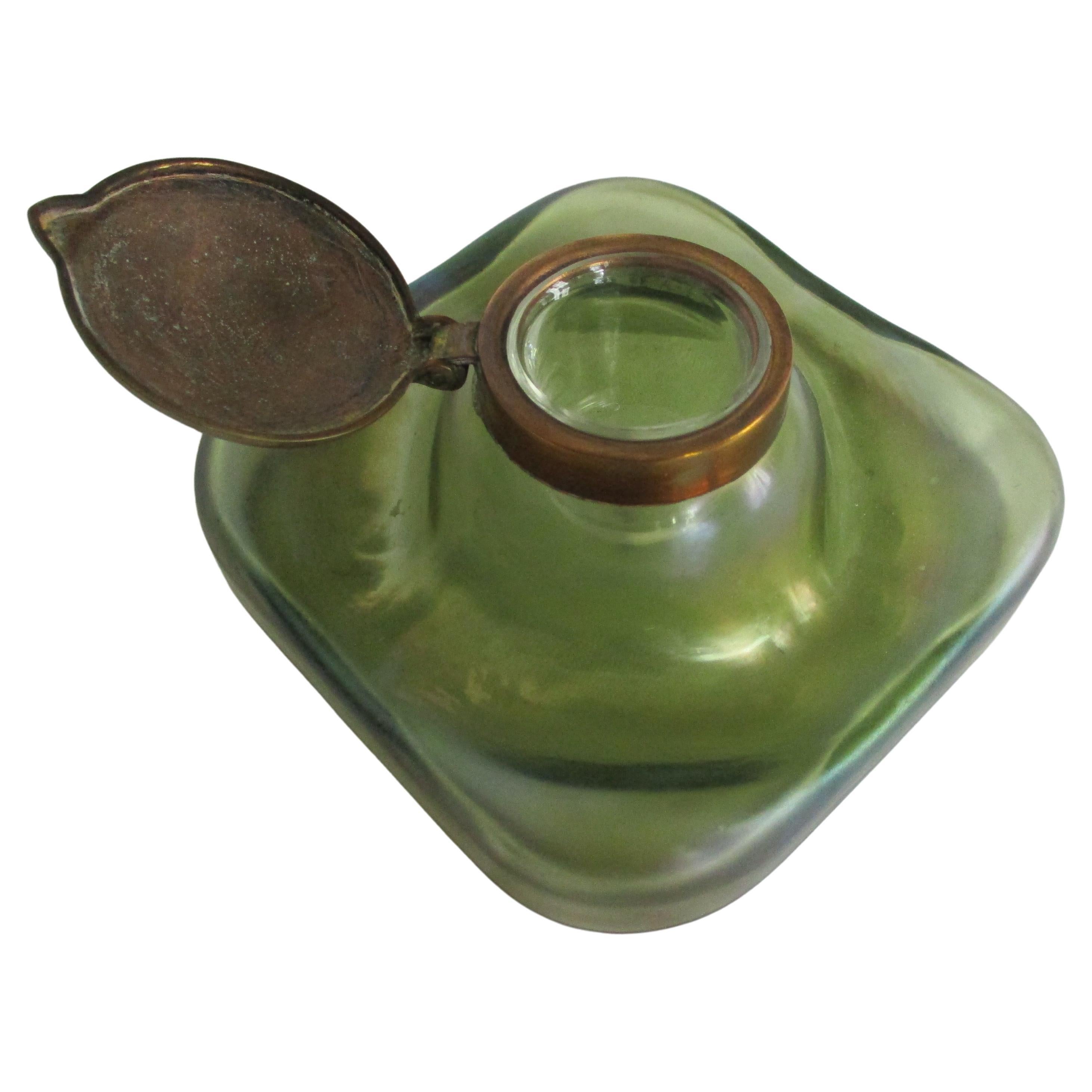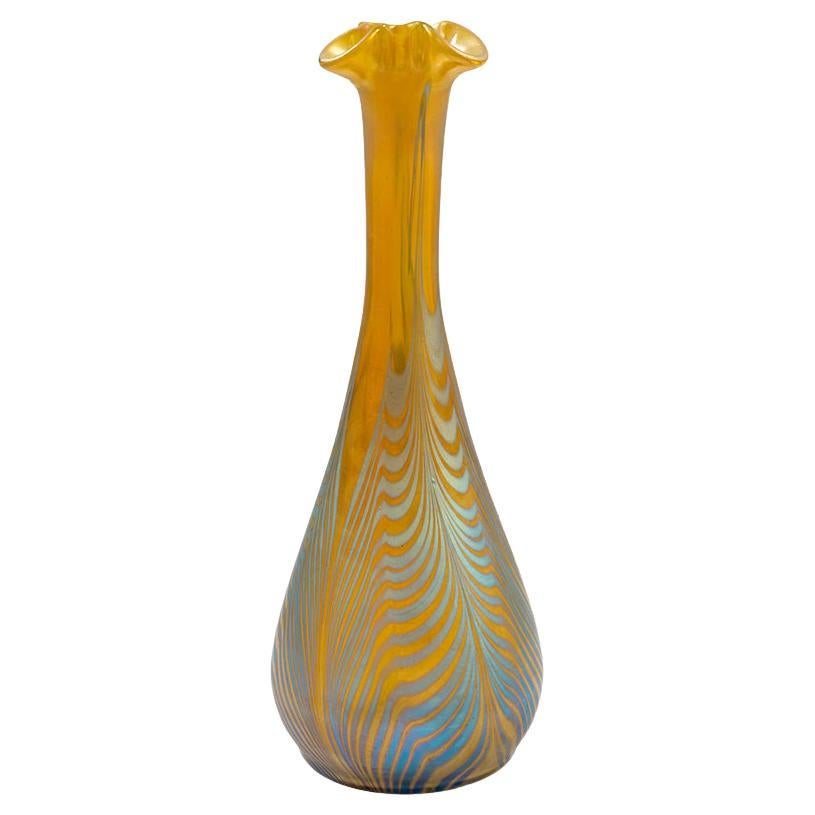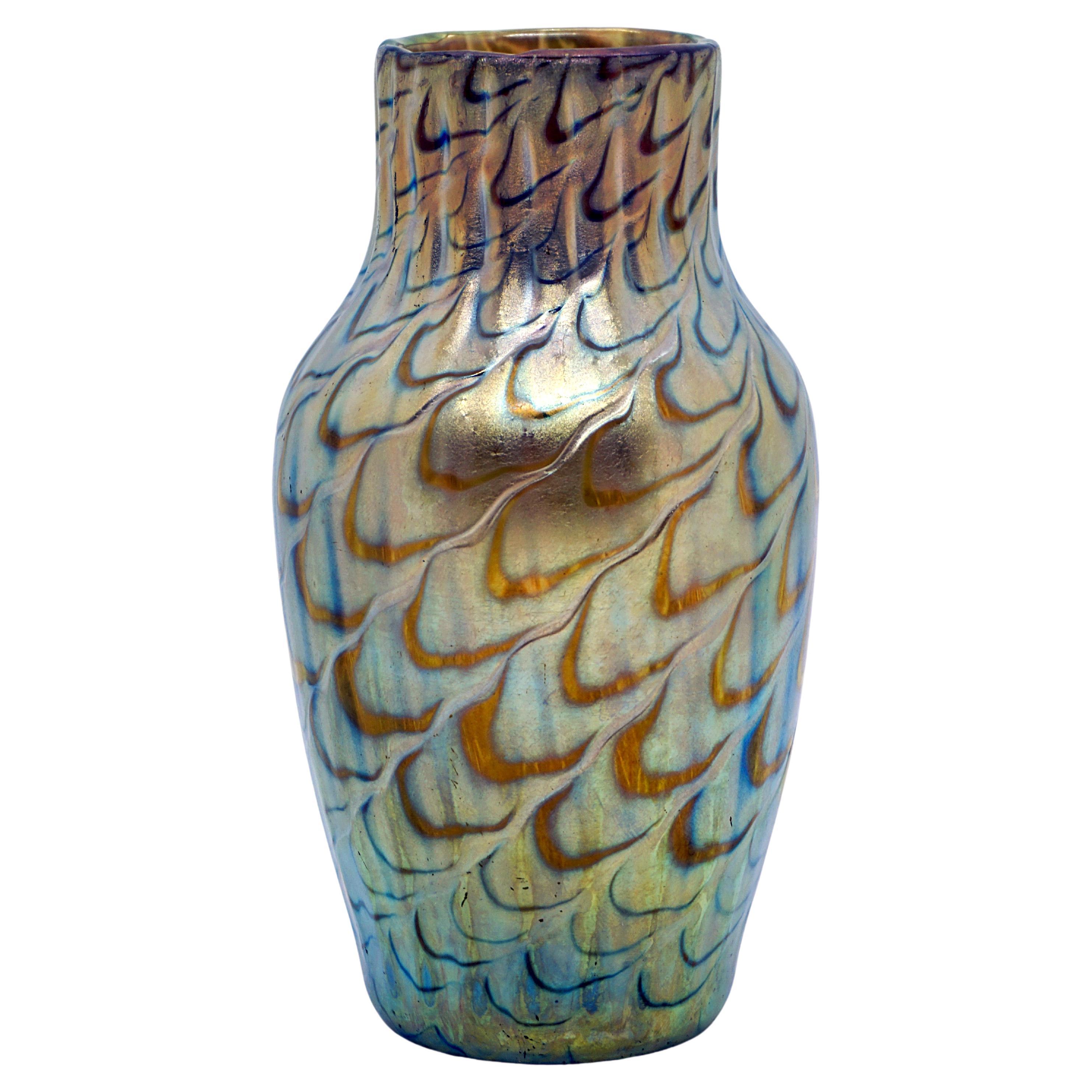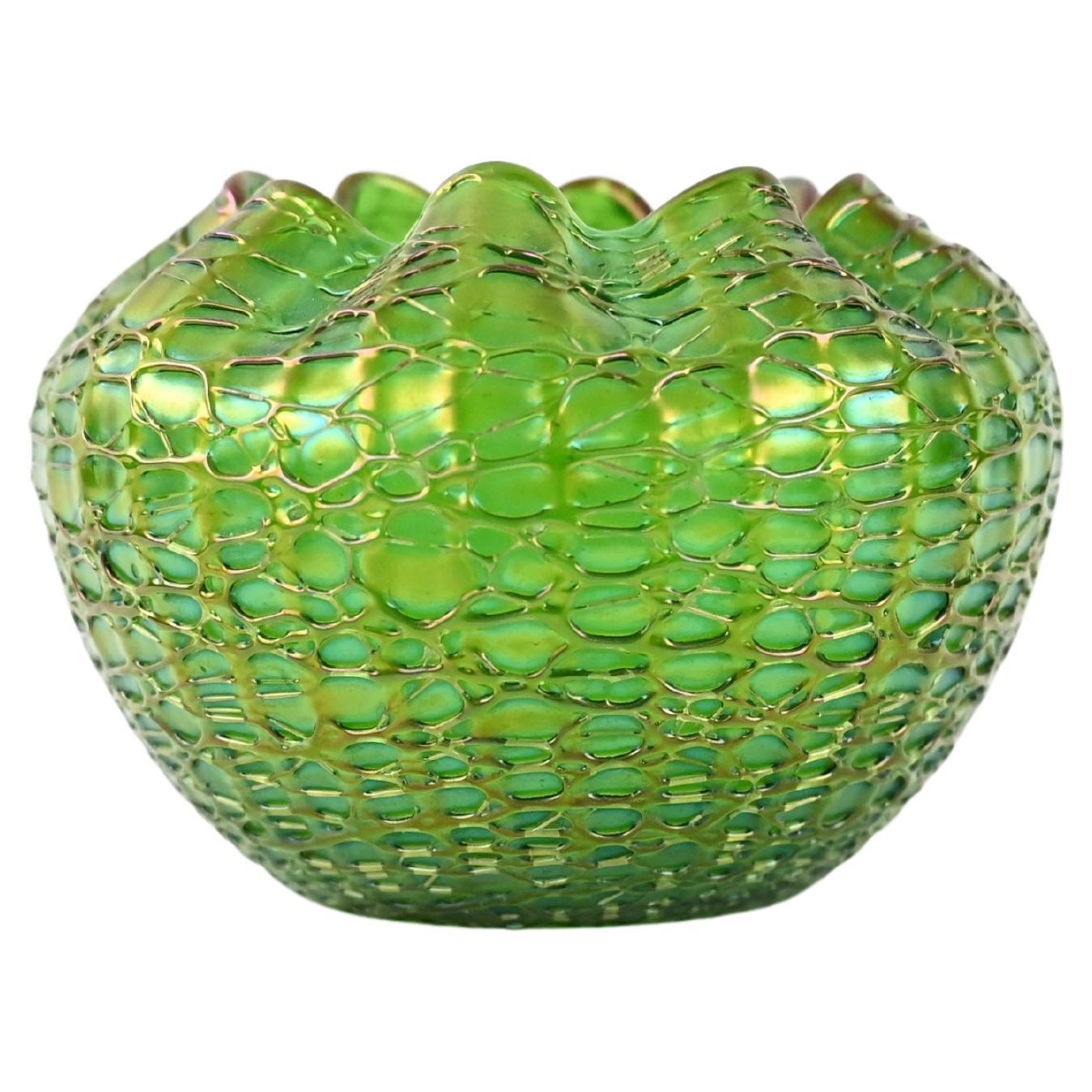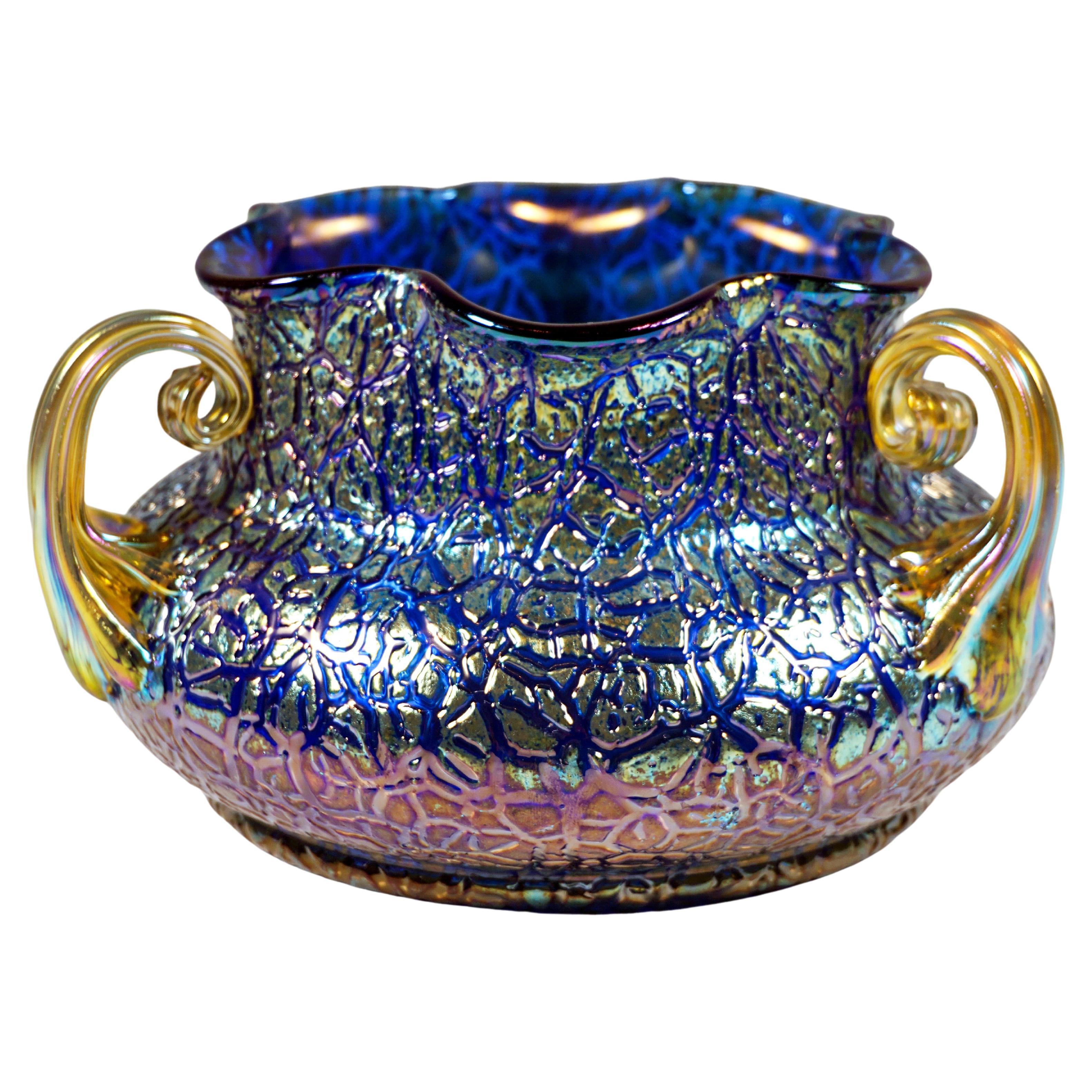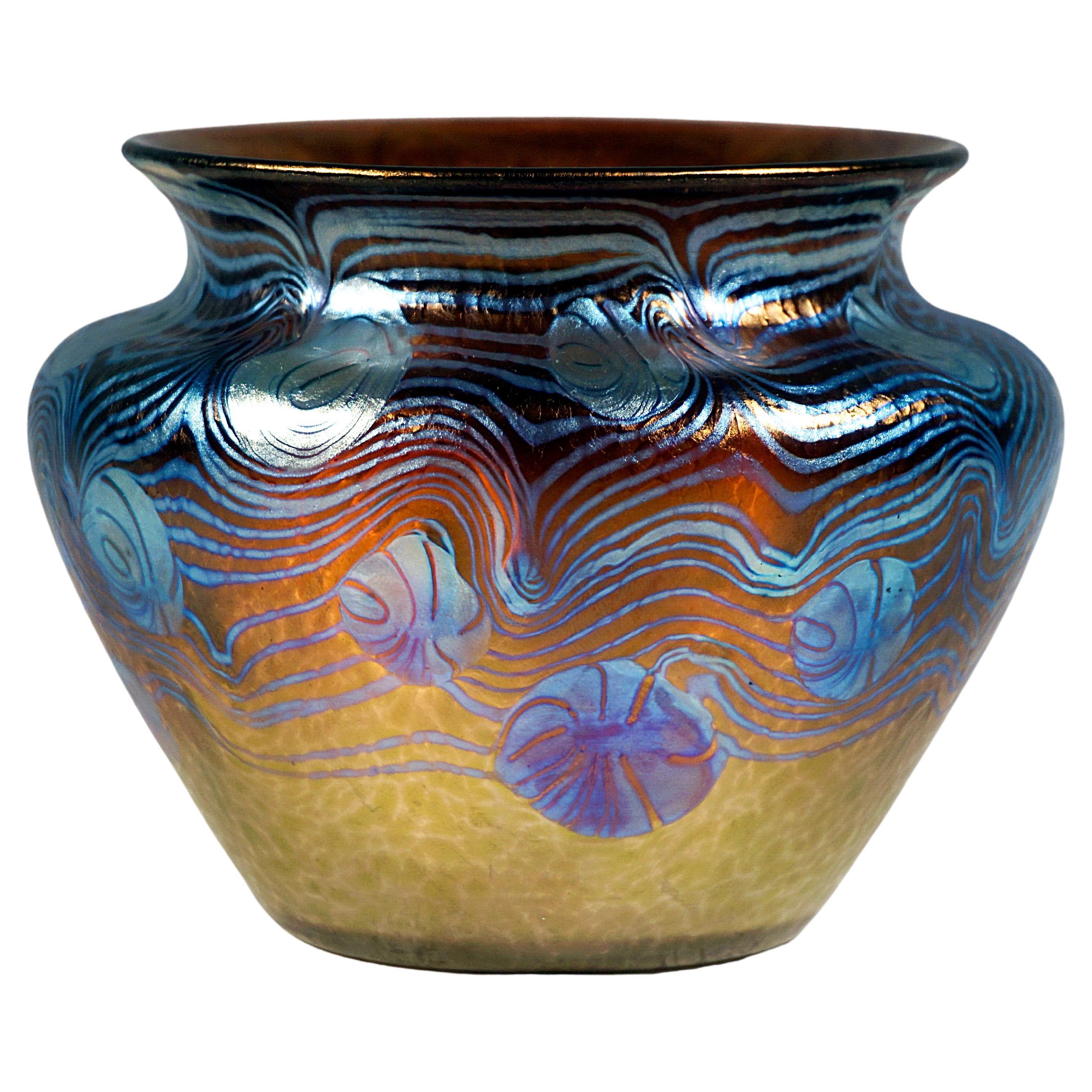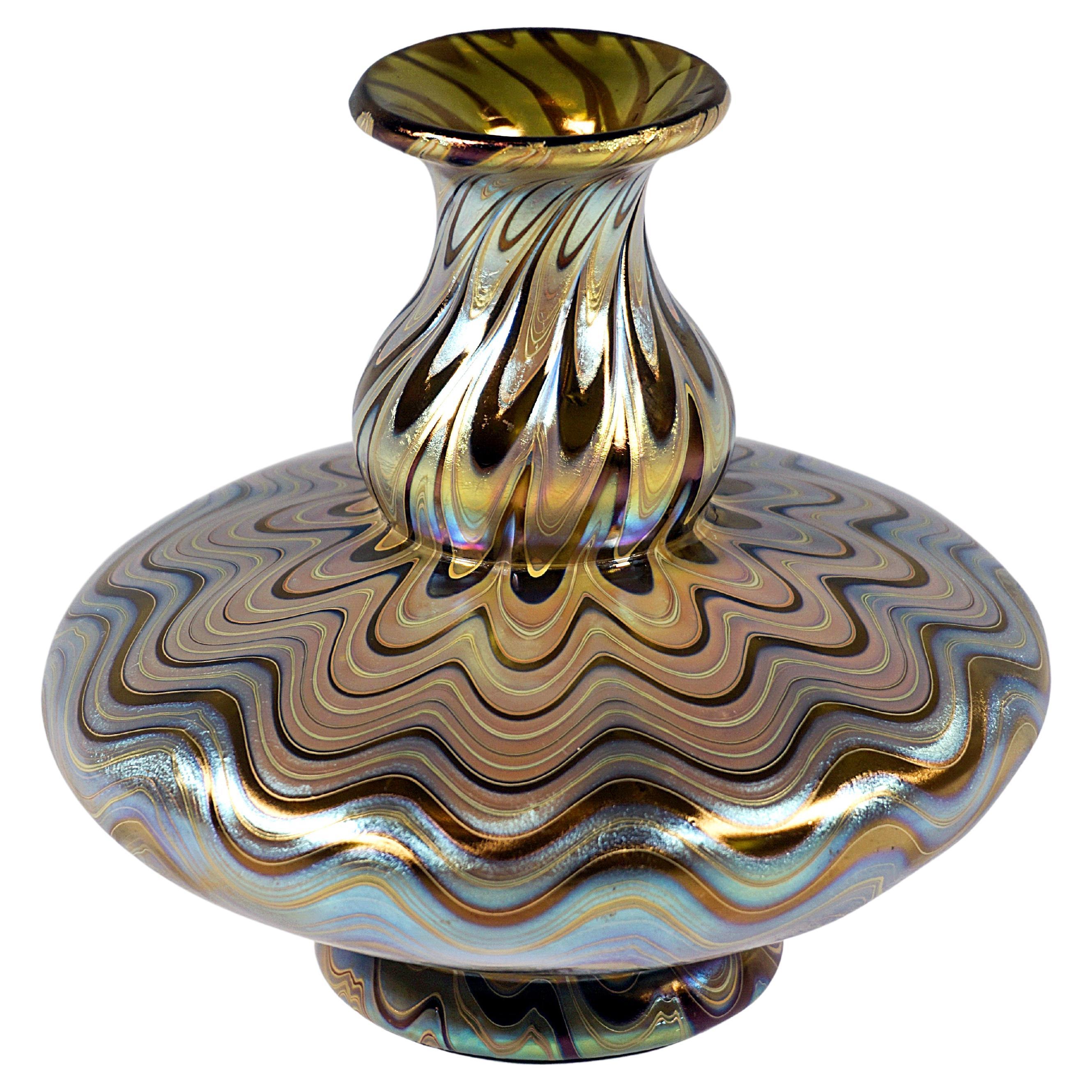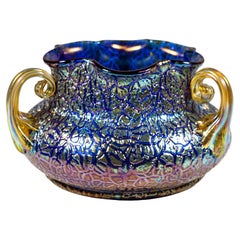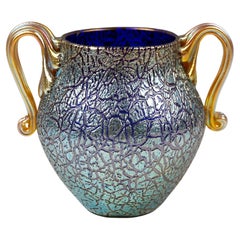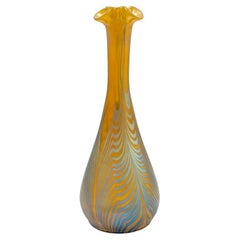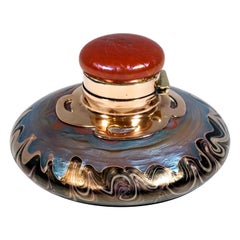
Loetz Art Nouveau Glass Inkwell For E. Bakalowits & Sons, Austria, circa 1901
View Similar Items
Loetz Art Nouveau Glass Inkwell For E. Bakalowits & Sons, Austria, circa 1901
About the Item
- Creator:Loetz Glass (Manufacturer)
- Dimensions:Height: 2.29 in (5.8 cm)Diameter: 4.34 in (11 cm)
- Style:Art Nouveau (Of the Period)
- Materials and Techniques:
- Place of Origin:
- Period:1900-1909
- Date of Manufacture:circa 1901
- Condition:
- Seller Location:Vienna, AT
- Reference Number:1stDibs: LU1014423180062
Loetz Glass
Best known to collectors for their magnificent Marmoriertes and Phänomen glass creations, the Loetz Glass company was a leading Art Nouveau producer of fine glass vases, bowls and other decorative objects through the mid-19th and early 20th centuries.
Shortly before his death in 1855, attorney Frank Gerstner transferred sole ownership of his glassworks company to his wife Susanne. The company, which was founded in what is now the Czech Republic in 1836 by Johann Eisner, was renamed Johann Loetz Witwe by Susanne Gerstner as a tribute to her late husband who preceded Gerstner, a glassmaker named Johann Loetz (Loetz was also known as Johann Lötz).
For 20 years, Gerstner led the company, expanding its manufacturing and distribution capacity. It proved profitable, but the glassworks' popularity didn't start gaining significant momentum until after Gerstner transferred sole ownership to her grandson Maximilian von Spaun in 1879.
Von Spaun and designer Eduard Prochaska developed innovative techniques and solutions for reproducing historical styles of decorative glass objects, such as the very popular marbled Marmoriertes glass — a technique that lends glass an appearance that is similar to semi-precious stones such as onyx or malachite. Under von Spaun’s leadership, the firm’s works garnered them success in Brussels, Vienna and Munich, and Johann Loetz Witwe won awards at the Paris World Exposition in 1889. In 1897 von Spaun first saw Favrile glass in Bohemia and Vienna.
The work in Favrile glass, a type of iridescent art glass that had recently been developed and patented by Louis Comfort Tiffany, founder of iconic American multimedia decorative-arts manufactory Tiffany Studios, inspired von Spaun to explore the era’s burgeoning Art Nouveau style — or, as the firm was established in a German-speaking region, the Jugendstil style.
The company partnered with designers Hans Bolek, Franz Hofstötter and Marie Kirschner and thrived until von Spaun passed it down to his son, Maximilian Robert.
With the Art Deco style taking shape around the world, the company was unable or unwilling to adapt to change. Loetz Glass collaborated with influential names in architecture and design, including the likes of Josef Hoffmann, a central figure in the evolution of modern design and a founder of the Vienna Secession. Unfortunately, the glassworks’ partnerships did them little good, and the company’s mounting financial problems proved difficult to navigate. Two World Wars and several major fires at the glassworks took their toll on the firm, and in 1947 the Loetz Glass Company closed its doors for good.
Today the exquisite glass produced by Loetz Glass Company remains prized by collectors and enthusiasts alike.
On 1stDibs, find antique Loetz Glass Company glassware, decorative objects and lighting.
- Loetz Art Nouveau Glass Vase Phenomenon Genre 7734, Austria-Hungary, circa 1898By Loetz GlassLocated in Vienna, ATMold-blown, baluster-shaped body on a flush stand, raised, widening, ribbed on the inside, forming a slight shoulder and short, straight neck, as well as stand area with ribs on the ...Category
Antique 1890s Austrian Art Nouveau Glass
MaterialsGlass
- Loetz Art Nouveau Vase Cobalt Mimosa With 3 Handles, Austria-Hungary, circa 1911By Loetz GlassLocated in Vienna, ATBlown, flat, bulbous body on a large, round, flush stand, contracting to a short, wide neck, slightly widened, 6-fold wavy indented mouth rim. Cobalt blue underlay with silver-yellow...Category
Vintage 1910s Austrian Art Nouveau Glass
MaterialsGlass
- Loetz Art Nouveau Vase Cobalt Mimosa with 2 Handles, Austria-Hungary, circa 1909By Loetz GlassLocated in Vienna, ATForm blown baluster-shaped body on a round, flush stand, bulbously widening and contracting to a short, wide neck. Cobalt blue underlay with silver-yellow-green crumb inclusions, 2 s...Category
Antique Early 1900s Austrian Art Nouveau Glass
MaterialsGlass
- Loetz Art Nouveau Vase, 'Argus', Phenomenon Gre 2/351 Austria-Hungary circa 1902By Loetz GlassLocated in Vienna, ATMold-blown body widening conically upwards, on a flush, round stand, a constriction forming the narrow shoulders with a wide opening, flared rim of the mouth, polished pontil with th...Category
Antique Early 1900s Austrian Art Nouveau Glass
MaterialsGlass
- Loetz Art Nouveau Glass Vase Bronze Phenomenon Genre 29, Austria-Hungary, C 1900By Loetz GlassLocated in Vienna, ATFinest Bohemian Art Nouveau Glass Vase: In shape blown low, cambered body on a large, round floor plan, triple indented wall with a mouth rim formed into a three-pass shape, polished...Category
Antique Early 1900s Austrian Art Nouveau Glass
MaterialsGlass
- Loetz Art Nouveau Glass Vase Phenomenon Genre 1/104, Austria-Hungary, Ca 1900By Loetz GlassLocated in Vienna, ATFinest Bohemian Art Nouveau Glass Vase: Blown into shape of raised body on a round ground plan, triple depressed wall with mouth rim formed into trefoil, polished pontil, with groun...Category
Antique Early 1900s Austrian Art Nouveau Glass
MaterialsGlass
- Kralik Loetz Art Nouveau Iridescent Glass InkwellBy Loetz GlassLocated in Vienna, ATAntique iridescent purple glass inkwell by Kralik in the "Pampas" decor, i.e. a Kralik decor shift on Loetz Pampas. Lobed square form with typical trailed...Category
Early 20th Century Austrian Art Nouveau Inkwells
MaterialsBrass
- Bohemian Glass Vase Loetz Austrian Jugendstil Yellow circa 1901By Loetz GlassLocated in Klosterneuburg, ATBohemian Glass Vase Loetz Austrian Jugendstil Yellow circa 1901 decoration PG 1/154 One of the main reasons for the big success of Loetz at the Pa...Category
Antique Early 1900s Austrian Jugendstil Vases
MaterialsArt Glass
- Petite Loetz Glass Vase circa 1901 Austrian Jugendstil Blue Green PurpleBy Loetz GlassLocated in Klosterneuburg, ATGlass vase manufactured by Johann Loetz Witwe PG 1/158 decoration ca. 1901 Austrian Jugendstil This vase is an excellently preserved and exquisite specimen, which illustrates the high art of glassblowing from the manufacturer Loetz. The decoration from the Phenomen Genre family is characterized mainly by the contrasting and matte iridescence, which show new qualities in their color gradient with each incidence of light. The veined and irregularly warped bands with their slightly silvery shimmer are particularly striking. What is exciting is that especially the decoration “PG 1/158” – originally composed of two different decorations – unfolds completely new on each form and thus gives each shape of vase something unique. Through the use of the base in the color green in combination with the different curvatures and indents of this filigree vase...Category
Antique Early 1900s Austrian Jugendstil Vases
MaterialsGlass
- Loetz Art Nouveau Jugendstil Art Glass BowlBy Loetz GlassLocated in Miami, FLA stunning Loetz art glass green bowl decorated with gold inclusions. The glass manufacturer Loetz after their big success at the Paris World Exhibition in 1900. While creating decoration variants, the owner of the glass workshop, Max Ritter von Spaun, was presumably inspired by works of Louis C. Tiffany. The applied applications by Loetz are positioned more prominently and have their own ornament in the form of pulled iridescent threads. This glass work of art known as Loetz Jugendstil...Category
Early 20th Century Austrian Art Nouveau Vases
MaterialsGlass, Art Glass
- Art Nouveau Typical Decanter with Handle by Loetz' glass Paste Austria 1910sBy Loetz GlassLocated in Verviers, BEArt Nouveau Typical Decanter with Handle by Loetz' glass Paste Austria 1910s Subtle, hand blown glass Decanter in the Art Nouveau style. Special color and technique for any collec...Category
Vintage 1910s Austrian Art Nouveau Vases
MaterialsBlown Glass, Art Glass
- Austrian Art Nouveau LOETZ Glass Vase Mouth-Blown Gold early 20th centuryBy Loetz GlassLocated in Klosterneuburg, ATAustrian Art Nouveau glass vase manufactured by Johann Loetz Witwe, early 20th century This glass artwork is a particularly elegant example from the late production of the Johann Loetz Witwe glass manufacture. Since the artists at Loetz were always open to new influences, they experimented with a variety of different decoration variations. Fortunately, a considerable proportion of those decorations could be assigned to the company without any doubt on the basis of the remaining cut patterns. However, some decoration variants have not yet been studied unequivocally. These variants are called "unidentified decorations". Our exciting object with the triple wavy opening and the silvery-golden shimmer...Category
Early 20th Century Austrian Jugendstil Glass
MaterialsGlass, Art Glass
